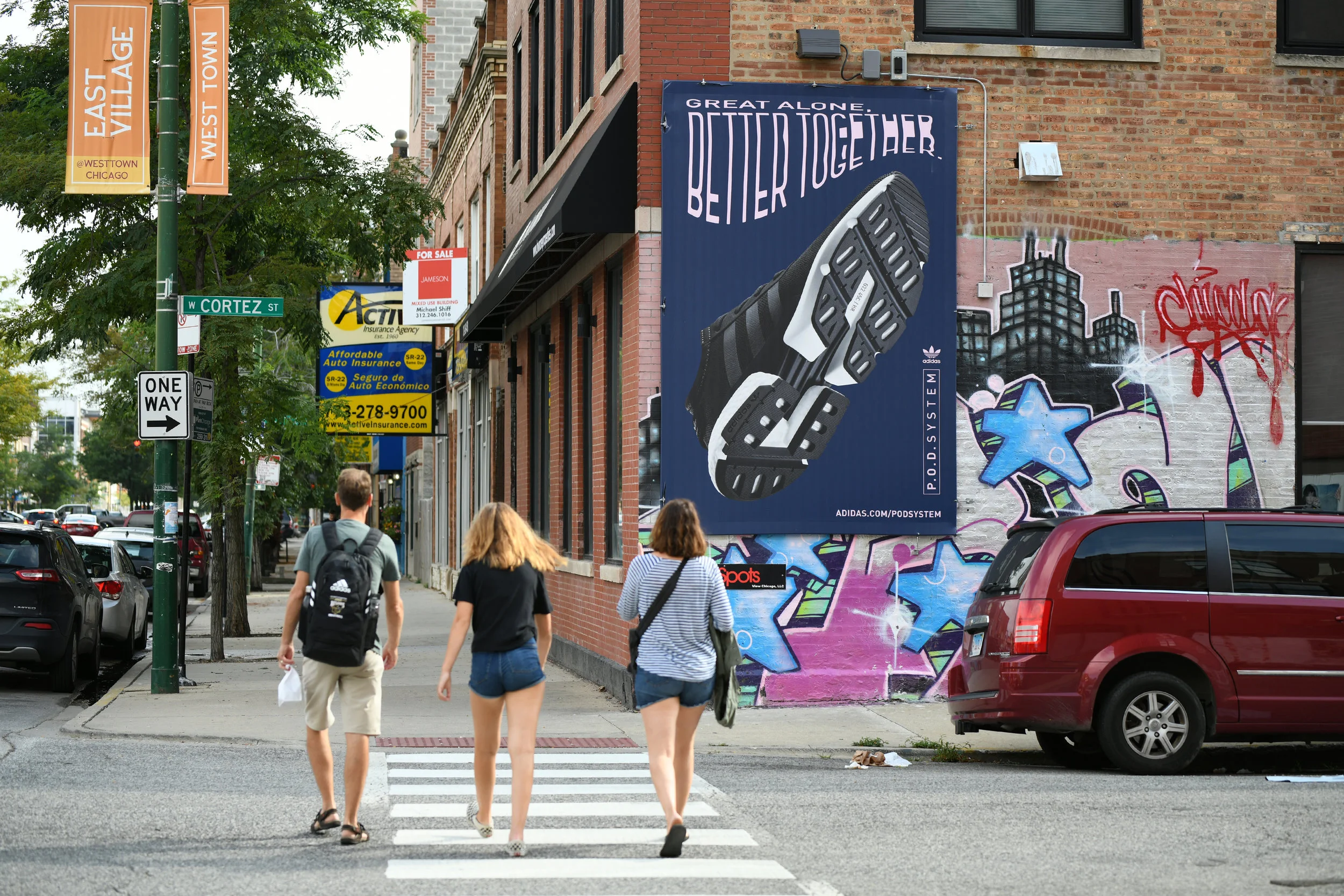In today’s data-filled world, advertisers must learn to incorporate data in their creative process. Data can help reach your audience at a larger scale with contextual and relevant information. Here are four ways to use OOH data to create effective campaigns.
The increased use of mobile devices has created opportunities in digital marketing for personalized targeting. Personalized targeting has been proven to be much more effective—studies have shown that contextual content increases positive associations with brands. In digital marketing, the interaction between the ad and the audience is one-to-one, meaning the ad can be entirely personalized to fit the profile of the viewer. However, the OOH medium is fundamentally one-to-many. How, then, can data be used to personalize ads for a larger audience?
The answer is mass personalization. Only a data-driven approach can provide a more contextualized and targeted experience, and the use of aggregated data provides a much clearer picture of how effective an ad campaign may be. Using data for targeting and ad campaign efficacy isn’t new. Rather, what continues to change and develop are the ways in which the data is used to increase this efficacy.
Below are four examples on how marketers use data to reach their target audience, increase positive impressions, and assess the success of ad campaigns.
Measurement
In order to use data, data sets must first be created by collecting information about the audience. Recently, marketers have moved away from collecting data manually to relying on technology for their data mining. Advanced technologies, such as automated sensors, collect movement data and location data. Collecting data automatically increases the amount of data collected, and therefore improves its precision. These data sets allow marketers to better understand the impact and effectiveness of their campaigns.
Metrics such as impressions, reach, and frequency give marketers the numbers needed to make data-driven decisions. For example, if a Wild Posting garners significant attention, marketers can use that information to create similar opportunities in other areas. As the industry evolves, data collection and its use is imperative for better targeted campaigns.
Targeting
Traditionally, OOH is used as a location-based strategy. High traffic area + striking visual design = increased frequency of impressions, right? It’s a simple idea, but with the use of data, your ads can be even more effective.
Data sets can help marketers know where your target audience lives, where they work, how they move through various environments, and the ads they interact with. Using this information, marketers are better able to decide which locations are better suited for certain brands. All this can all be done while still being conscious of privacy concerns, since anonymous and aggregated audiences are fine for planning and evaluating OOH campaigns.
Using this data, brands can reach larger audiences in more efficient ways, such as coordinating OOH strategies with digital marketing strategies to create a cohesive branding effort.
Dynamic Creative
Customized content provides relevant information to a target audience. What if you could use data to change the displayed content in real time? Though not used as often, a dynamic creative is the ultimate tool to increase impressions.
Picture a shoe ad in Lincoln Park with a woman running through a forest. If the day turns from sunny to rainy, the image changes. Now, she wears a rain jacket, also by the same brand. The target audience shifts from people who may be interested in shoes to people caught in the rain, and the ad becomes incredibly effective.
The use of dynamic creative along with data is continuing to grow. But it’s not difficult to start—easily-accessible data sources such as weather reports and language translators can be used to customize advertising content. From there, any data regarding context, location, or behavior can be used to produce automated changes to increase impact.
Attribution or Campaign Effectiveness
The purpose of collecting data is to be well informed. After an ad campaign is launched, marketers collect data to use in order to assess the efficacy of the campaign. Increased impressions do not necessarily mean success for an ad campaign; the most important metrics are the ones collected by the company itself. Did the ad campaign lead to increased sales? Did the ads lead to increased social media interaction with the brand? These are the final objectives of an ad campaign, and the only way to know whether or not it is truly working is to analyze and compare the data.
Whether you are a single-store retailer, direct-to-consumer website, or a large brand or wholesaler our advertising experts can help you increase the efficacy of your ad campaigns through a data-driven approach.




